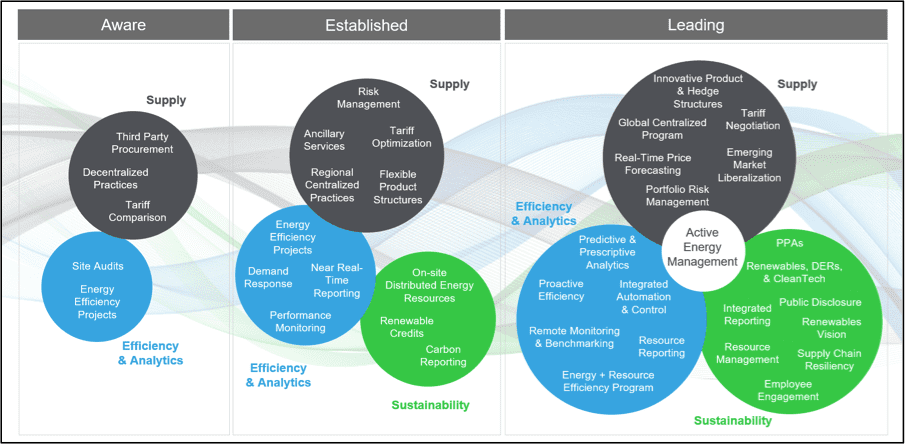The previous post in this series introduced our 3-phase approach to decarbonizing the healthcare sector. In this blog, I will further address healthcare sustainability and discuss the industry’s sustainability journey.
Healthcare is among the most energy-intensive sectors, representing 7% of Australia’s total emissions. Hospitals use vast amounts of energy and water and generate large volumes of waste. According to Healthcare Without Harm, the healthcare sector’s emissions footprint is equivalent to 4.4% of the total global net emissions, with the US, China, and the EU representing 56% of the world’s total healthcare climate footprint.
The World Health Organization estimates that energy costs and usage in healthcare facilities will only escalate over the next five years. Considering that 25% of a hospital’s operating expenses (OpEx) are related to energy consumption, reducing the energy footprint can translate to an immediate improvement in financial performance.
It’s imperative for healthcare organizations to develop and implement sustainability strategies, not only to achieve net-zero emissions by 2050, as established in the Paris Agreement, but also to reduce their OpEx. Beyond these commitments, some clinical organizations such as Doctors for the Environment Australia are advocating for more stringent commitments and requesting organizations commit to net-zero emissions by 2040 with an interim goal of 80% reduction by 2030.
Understanding sustainability scopes
The Greenhouse Gas Protocol defines three different scopes of emissions, see Figure 1, based on the ownership of and the level of control over those emissions.
For the healthcare industry, according to Healthcare Without Harm, the distribution of carbon emissions across all three sustainability scopes are:
- Scope 1 – Emissions resulting from the direct combustion of fossil fuels (such as natural gas or fuel for owned vehicles) account for 17% of healthcare’s worldwide footprint.
- Scope 2 – Indirect emissions from purchased energy sources (electricity, district heating and cooling, steam, etc.) comprise another 12%, depending on the on-grid electricity generation. In Australia, the latest National Greenhouse Accounts (NGA) Factor’s report shows a significant variance across states with emissions factors as high as 0.96 kgCO2-e/KWh in Victoria and as low as 0.16 kgCo2-e/KWh in Tasmania.
- Scope 3 – Emissions from the sector’s supply chain represent the most significant contributor to the total emissions, with a 71% share. Scope 3 emissions are the hardest to track, monitor, and remove as they involve a range of sub-scopes, such as business travel, staff/visitor transport, and emissions resulting from capital works or purchased/leased equipment.

Most healthcare organizations are developing and implementing plans to manage and reduce emissions across all three scopes. These strategies encompass direct actions from short-term energy efficiency activities to mid and long-term ones, such as asset lifecycle, decarbonization investment plans, and energy procurement plans.
Achieving sustainability goals through active energy management
An active energy management strategy can help you navigate energy management challenges and be the backbone of your sustainability journey. Active energy management, see Figure 2, is an innovative approach to sustainability that emphasizes the need for ongoing action and engagement and encompasses three main components:
- Supply and procurement – includes components including tariff optimization, budget development, and commodities forecasting. Given the criticality of healthcare operations, risk management is crucial to help focus on achieving infrastructure resilience and operational efficiency.
- Efficiency and analytics – includes several key actions spanning energy assessment, metering and energy analysis, integrated automation and control, and energy performance certification. It is becoming more common for healthcare facilities to seek energy performance certification through tools such as Green Star and NABERS for hospitals. Another opportunity is using data analytics and artificial intelligence (AI) to identify operational inefficiencies and design automation strategies to maximize infrastructure performance.
- Sustainability – includes core activities such as carbon reporting, the use of cleantech, installation of renewables and distributed energy resources (DER), and resource management across all key resources such as energy, water, or building materials. Healthcare organizations have large footprints making renewable energy sources and microgrids ideal approaches towards decarbonization and supporting infrastructure electrification. Another key area of focus is carbon footprint tracking across all three emission scopes, starting with a complete analysis of direct energy usage followed by a thorough analysis of the supply chain’s sustainability impacts.

Active energy management is not a static process but an ongoing journey that requires continual action and engagement. Healthcare organizations can promote sustainability by continually improving their energy management practices.
Learn more
As a globally recognized leader in sustainability, Schneider Electric is well-positioned to help healthcare organizations achieve their sustainability goals with our EcoStruxure™ platform and services. Through partnership, collaboration, and consultancy services, a suitable active energy management strategy can be designed to tackle the decarbonization of healthcare organizations across all three sustainability scopes.
To learn more, visit EcoStruxure for Healthcare and download our e-guide: Simplifying the journey to resilient, energy-efficient, and sustainable healthcare operations.



